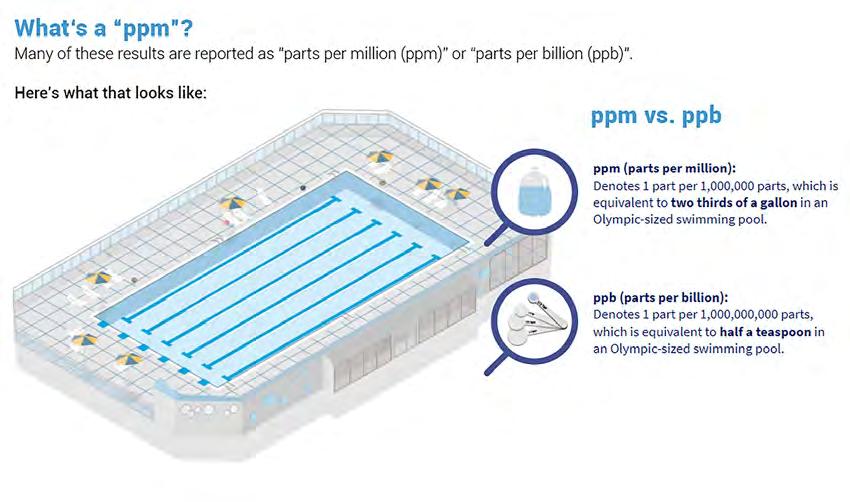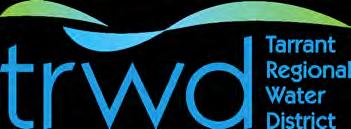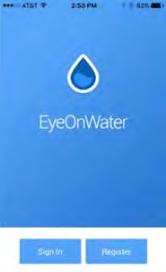
WATER QUALITY REPORT REPORT FOR 2023 DATA


WATER QUALITY REPORT REPORT FOR 2023 DATA
The City of Southlake’s goal is to provide you with safe and reliable drinking water. We are happy to report that our water meets the safe drinking water quality standards as set by the U.S. Environmental Protection Agency (EPA) and the Texas Commission on Environmental Quality (TCEQ).This report is a summary of the quality of the water we provided to you in 2023.
Para ver este informe en español, por favor dirijase a la pagina 22.
This report is a summary of the quality of water we provided to our customers in 2023. Data found in the following pages was obtained from sampling protocols, as defined by the Environmental Protection Agency (EPA).
AL: Action level; The concentration of a contaminant, which, if exceeded, triggers treatment or other requirements that a water system must follow per EPA and TCEQ mandates.
AVG: Average; Regulatory compliance with some maximum contaminant levels (MCLs) are based on the running of annual average of monthly samples.
LEVEL 1 ASSESSMENT: A Level 1 assessment is a study of the water system to identify potential problems and determine (if possible) why total coliform bacteria were found.
LEVEL 2 ASSESSMENT: A Level 2 assessment is a very detailed study of the water system to identify potential problems and determine (if possible) why an Escherichia coli (E. coli) maximum contaminant level (MCL) violation has occurred and/or why total coliform bacteria were found on multiple occasions.
MCL: Maximum Contaminant Level; The highest level of a contaminant allowed in drinking water. MCLs are set as close to the MCLGs as feasible using the best available treatment technology.
MCLG: Maximum Contaminant Level Goal; The level of a contaminant in drinking water below which there is no known or expected health risks. MCLGs allow for a margin of safety.
MRDL: Maximum Residual Disinfectant Level; The highest level of disinfectant allowed in drinking water. There is evidence that the addition of a disinfectant is necessary for control of microbial contaminants.
MFL: Million fibers per liter; A measure of asbestos.
MRDLG: Maximum Residual Disinfectant Level Goal; The level of a drinking water disinfectant below which there are no known or expected health risks. MRDLGs do not reflect the benefits of the use of disinfectants to control microbial contaminants.
mrem: Millirems per year; A measure of radiation absorbed by the body.
MRL: Minimum Reporting Level; The lowest concentration of a constituent or a contaminant that can be measured by a laboratory.
N/A: Data field not applicable to the particular constituent we are reporting information about.
NTU: Nephelometric Turbidity Units; A measure of water turbidity or clarity.
pCi/L: Picocuries per liter; A measure of radioactivity.
ppb: Parts per billion, or micrograms per liter (µg/L).
ppm: Parts per million, or milligrams per liter (mg/L).
ppq: Parts per quadrillion, or picograms per liter (pg/L).
ppt: Parts per trillion, or nanograms per liter (ng/L).
TT: Treatment Technique; A required process intended to reduce the level of a contaminant in drinking water.

This Consumer Confidence Report is a summary of the constituents that are in your drinking water and how these constituents may affect your health, if found in excess of safe drinking water quality standards. This quick reference may help you to better understand the information provided in the rest of this report.
(See next page)
Parts per million is equal to one teaspoon in 1,302 gallons.
Parts per billion is equal to one teaspoon in 1,302,000 gallons.
The amount, from lowest to highest, of this contaminant detected in our drinking water last year.
The average amount of this contaminant detected in our drinking water last year.
The highest amount of a contaminant EPA allows in drinking water. Below this level, a contaminant has no known or expected health risks.
This describes some of the ways contaminants enter drinking water; wording is provided by EPA and may or may not apply to the City of Southlake.

The sources of drinking water (both tap water and bottled water) include rivers, lakes, streams, ponds, reservoirs, springs, and wells.
As water travels over the surface of the land or through the ground, it dissolves naturally occurring minerals and, in some cases, radioactive material, and can pick up substances resulting from the presence of animals or from human activity.
1
Drinking water, including bottled water, may reasonably be expected to contain at least small amounts of some contaminants. The presence of contaminants does not necessarily indicate that water poses a health risk.
More information about contaminants and potential health effects can be obtained by calling the EPA Safe Drinking Water Hotline at (800) 426-4791.
Contaminants that may be present in source water include:
Microbial contaminants, such as viruses and bacteria, which may come from sewage treatment plants, septic systems, agricultural livestock operations, and wildlife.
2
Pesticides and herbicides, which may come from a variety of sources such as agriculture, urban storm water runoff, and residential uses.
3
Inorganic contaminants, such as salts and metals, which can be naturally occurring or result from urban storm water runoff, industrial or domestic wastewater discharges, oil and gas production, mining, or farming.
4
Organic chemical contaminants, including synthetic and volatile organic chemicals, which are by-products of industrial processes and petroleum production, and can also come from gas stations, urban storm water runoff, and septic systems.
5 Radioactive contaminants, which can be naturally occurring or be the result of oil and gas production and mining activities.

The City of Southlake gets all its water from the City of Fort Worth’s Water Department. Fort Worth obtains water from surface water sources: Lake Worth, Eagle Mountain Lake, Lake Bridgeport, Richland Chambers Reservoir, Cedar Creek Reservoir, and the Clear Fork Trinity River (from Lake Benbrook).
Fort Worth owns Lake Worth. The U.S. Army Corps of Engineers is responsible for Lake Benbrook. The other four lakes are owned and operated by Tarrant Regional Water District (TRWD).

The Texas Commission on Environmental Quality (TCEQ) completed an assessment of Fort Worth’s, and subsequently, Southlake’s source waters.
TCEQ classified the risk to our source waters as high for most contaminants. High susceptibility means there are activities near the source water or watershed that make it very likely that chemical constituents may come into contact with the source water. It does not mean that there are any health risks present. The sampling requirements for our water system is based on this susceptibility and previous sample data. Any detections of these contaminants will be found in this Consumer Confidence Report.
Every year the City of Southlake is required to report water loss to the Texas Water Development Board (TWDB). This is nonmetered water used in fire protection, water line flushing for health and safety, and other activities.
Water loss also includes water lost to leaks, line breaks, and other uncontrollable flow. We reported a loss of approximately 25 gallons per water account in 2023. One of the most important tools in accurately measuring water loss and ensuring accurate utility billing is the water meters throughout the City. The large production meters that measure the incoming water purchased from the City of Fort Worth are tested and calibrated at least once per year. The Southlake Water Utilities’ goal is to conform to the American Water Works Association (AWWA) meter accuracy standard of 98.5% to 101.5%. The margin of error is due to water meters becoming inaccurate over time due to age, damage, or leaks.
In accordance with the requirements of §290.272. Content of the Report. (g) (6) “Systems that use an interconnect or emergency source to augment the drinking water supply during the calendar year of the report must provide the source of the water, the length of time used, an explanation of why it was used, and whom to call for the water quality information.” The City of Fort Worth did not utilize an emergency interconnection in 2023.

Tarrant Regional Water District monitors the raw water at all intake sites for Cryptosporidium, Giardia lamblia and viruses. The source is human and animal fecal waste in the watershed. The 2023 sampling showed occasional low-level detections of Cryptosporidium, and Giardia lamblia. These are either deactivated or removed through disinfection and/or filtration.
Viruses are treated through disinfection processes. Cryptosporidium and Giardia lamblia are removed through disinfection and/or filtration.
You may be more vulnerable than the general population to certain microbial contaminants, such as
Cryptosporidium , in drinking water. Infants, some elderly, or immuno compromised persons, such as those undergoing chemotherapy for cancer, those who have undergone organ transplants, those who are undergoing treatment with steroids, and people with HIV/AIDS or other immune system disorders can be particularly at risk from infections.
You should seek advice about drinking water from your physician or health care provider. Additional guidelines on appropriate ways to lessen the risk of infection by Cryptosporidium are available from the Safe Drinking Water Hotline-(800) 426-4791.
The City of Southlake is responsible for providing high quality drinking water, but cannot control the variety of materials used in plumbing components. If you haven’t turned on any faucets in several hours, you can minimize the potential for lead exposure by flushing your tap for 30 seconds to two minutes before using
the water for drinking or cooking. Never use hot water from the tap for cooking or preparing infant formula. If present, elevated levels of lead can lead to serious health problems, especially for pregnant women and young children. Lead in drinking water is primarily from materials and components associated with service lines and private plumbing.
For more information on source water assessments and protection efforts at our system, contact Southlake Water Utilities at (817) 748-8082.
Further details about the source water assessments are available at www.tceq.texas.gov/ gis/swaview. Further details about sources and source water assessments are available through the Texas Commission on Environmental Quality at www.tceq.texas.gov/drinkingwater.

Erosion of natural deposits; leaching from wood preservatives; corrosion of household plumbing systems
Erosion of natural deposits; Corrosion of household plumbing systems
If you are concerned about lead in your water, you may request to have your water tested through the City of Southlake Public Works Department. Information on lead in drinking water, testing methods, and steps you can take to minimize exposure is available from the Safe Drinking Water Hotline (800) 426-4791 or at www.epa.gov/safewater/lead.
To meet the requirements of the Lead and Copper Rule, Fort Worth achieves corrosion control through pH adjustment. Corrosion control does not remove lead pipes, but it reduces the risk of lead breaking off or dissolving into drinking water.
Soil runoff (Turbidity is a measure of the cloudiness of water. It is monitored because it is a good indicator of the effectiveness of the filtration system.)*
Coliforms are naturally present in the environment as well as

Decay of natural and man-made deposits
NoErosion of natural deposits
Erosion of natural deposits; runoff from orchards; runoff from glass and electronics production wastes
Runoff from herbicide used on row crops
Discharge of drilling wastes; discharge from metal refineries; erosion of natural deposits
Discharge from plastic and fertilizer factories; discharge from steel and metal factories
Erosion of natural deposits; water additive which promotes strong teeth; discharge from fertilizer and aluminum factories
Runoff from fertilizer use; leaching from septic tanks, sewage; erosion of natural deposits
CompoundMeasureRange in Your Water
Bicarbonate
ppm88.3 to 134
Calcium ppm26.2 to 41.3
Chloride ppm22.2 to 38.7
Conductivity µmhos/cm322 to 494
pH units8.1 to 8.5
Magnesium ppm3.5 to 7.4
Sodium ppm23.2 to 31.6
Sulfate ppm28.4 to 48.0
Total Alkalinity as CaCO3 ppm88.3 to 141
Total Dissolved Solids ppm184 to 274
Total Hardness as CaCO3 ppm79.9 to 134
Total Hardness in Grains grains/ gallon 5 to 8
Decay of asbestos cement water mains;
deposits
Runoff from fertilizer use; leaching from septic tanks, sewage; erosion of natural deposits
Occasionally, water suppliers experience episodes of unpleasant odors and tastes in the water, often characterized as “earthy” or “musty.” These taste and odor variations are caused by naturally occurring algae growth in one source of your drinking water, such as Eagle Mountain Lake.The compounds that cause this particular taste and smell do not pose any health risks.
Other constituents, which are often found in drinking water, can also cause taste, color, and odor.These secondary constituents are not causes for health concern. We report information about these secondary constituents to help you in making a determination about the taste, odor, and appearance of your water.
These constituents do not relate to public health but rather to the aesthetic effects. These items are often important to industry.
This table includes all of the compounds that comprise each of the haloacetic acid groups. Compounds that are not detected are usually not listed in the charts in this report; however, those undetected are listed below to provide complete information on the compounds that comprise each of the three groups in the table below.
Bromodichloromethaneppb
By-products of drinking water disinfection; not regulated individually; included in Total Trihalomethanes
Dibromoacetic Acidppb N/A1.311 to 1.70
Monobromoacetic Acidppb N/A0.00.0
By-products of drinking water disinfection; not regulated individually; included in Haloacetic Acids Dichloroacetic
Water utilities in the United States monitor for more than 100 contaminants and must meet 91 regulations for water safety and quality.
Should other contaminants be regulated? The 1996 Safe Drinking Water Act amendments require that once every five years, the EPA issues a new list of up to 30 unregulated contaminants to be monitored by public water systems. Unregulated contaminants are those for which EPA has not established drinking water standards.
The purpose of unregulated contaminant monitoring is to assist the EPA in determining the occurrence of unregulated contaminants in drinking water and whether future regulation is warranted. Because these contaminants are not regulated, there is not a Maximum Contaminant Level or Maximum Contaminant Level Goal. The fifth Unregulated Contaminant Monitoring
Rule (UCMR 5) includes assessment for 29 PFAs (per- and polyfluoroalkyl substances) and lithium. The rule requires testing for these substances in four consecutive quarters. Fort Worth began their sampling in January 2023 at the distribution entry points for each treatment plant, except North Holly. North Holly was down at the time so it’s fourth quarter of sampling occured in January 2024.
Southlake’s testing period is from November 2023 through August 2024. According to federal regulations, water systems must notify their customers of the findings within 12 months of receiving the results and in the annual water quality reports. The 12-month time frame applies to the individual quarterly results. Southlake will include UCMR 5 sample results in the 2024 and 2025 annual Water Quality Reports.
For additional information, please visit: www.epa.gov/dwucmr.

Contaminant
Bromodichloromethaneppb Not regulated0.03.410 to 5.72
Chloroform ppb Not regulated703.530 to 6.55
Dibromochloromethaneppb Not regulated602.560 to 6.75
Bromoform ppb Not regulated0.00.400 to 3.32 By-products of drinking water disinfection; not regulated individually; included in Total Trihalomethanes
Dichloroacetic Acidppb Not regulated0.04.092 to 14.10
Monobromoacetic Acidppb Not regulatedN/A0.090 to 1.20
Monochloroacetic Acidppb Not regulated701.730 to 5.10
Dibromoacetic Acidppb Not regulatedN/A0.980 to 2.40 By-products of drinking water disinfection; not regulated individually; included in Haloacetic Acids
Trichloroacetic Acidppb Not regulated2000 to 0
UCMR 5 - Eagle Mountain Water Treatment Plant
5
Compounds not detected in Fort Worth’s water: 11-chloroeicosafluoro-3-oxaundecane-1-sulfonic acid (11Cl-PF3OUdS) • 1H,1H, 2H, 2H-perfluorodecane sulfonic acid (8:2FTS) • 1H,1H, 2H, 2H-perfluorohexane sulfonic acid (4:2FTS) • 1H,1H, 2H, 2H-perfluorooctane sulfonic acid (6:2FTS) • 4, 8-dioxa-3H-perfluorononanoic acid (ADONA) • 9-chlorohexadecafluoro-3-oxanonane-1-sulfonic acid (9Cl-PF3ONS) • hexafluoropropylene oxide dimer acid (HFPO-DA)(GenX)* • nonafluoro-3,6-dioxaheptanoic acid (NFDHA) • perfluoro (2-ethoxyethane) sulfonic acid (PFEESA) • perfluoro-3-methoxypropanoic acid (PFMPA) • perfluoro-4-methoxybutanoic acid (PFMBA) • perfluorodecanoic acid (PFDA) • perfluorododecanoic acid (PFDoA) • perfluoroheptanesulfonic acid (PFHpS) • perfluoroheptanoic acid (PFHpA) • perfluorononanoic acid (PFNA)* • perfluoropentanesulfonic acid (PFPeS) • perfluoroundecanoic acid (PFUnA) • N-ethyl perfluorooctanesulfonamidoacetic acid (NEtFOSAA) • N-methyl perfluorooctanesulfonamidoacetic acid (NMeFOSAA) • perfluorotetradecanoic acid (PFTA) • perfluorotridecanoic acid (PFTrDA) • lithium
Compounds not detected in Southlake’s water: 11-chloroeicosafluoro-3-oxaundecane-1-sulfonic acid (11Cl-PF3OUdS) • 1H,1H, 2H, 2H-perfluorodecane sulfonic acid (8:2FTS) • 1H,1H, 2H, 2H-perfluorohexane sulfonic acid (4:2FTS) • 1H,1H, 2H, 2H-perfluorooctane sulfonic acid (6:2FTS) • 4, 8-dioxa-3H-perfluorononanoic acid (ADONA) • 9-chlorohexadecafluoro-3-oxanonane1-sulfonic acid (9Cl-PF3ONS) • hexafluoropropylene oxide dimer acid (HFPO-DA)(GenX)* • nonafluoro3,6-dioxaheptanoic acid (NFDHA) • perfluoro (2-ethoxyethane) sulfonic acid (PFEESA) • perfluoro-3methoxypropanoic acid (PFMPA) • perfluoro-4-methoxybutanoic acid (PFMBA) • perfluorodecanoic acid (PFDA) • perfluorododecanoic acid (PFDoA) • perfluoroheptanesulfonic acid (PFHpS) • perfluoroheptanoic acid (PFHpA) • perfluorononanoic acid (PFNA) • perfluorooctanoic acid (PFOA) • perfluoropentanesulfonic acid (PFPeS) • perfluoroundecanoic acid (PFUnA) • N-ethyl perfluorooctanesulfonamidoacetic acid (NEtFOSAA) • N-methyl perfluorooctanesulfonamidoacetic acid (NMeFOSAA) • perfluorotetradecanoic acid (PFTA) • perfluorotridecanoic acid (PFTrDA) • lithium
https://www.epa.gov/ground-water-and-drinking-water/proposedlead-and-copper-rule-improvements
The updated regulations proposed by the Environmental Protection Agency (EPA), under the Lead and Copper Rule Revisions (LCRR), mandate that the City of Southlake establish and manage an inventory detailing the materials used in water service lines. These initial inventories must be furnished to state primacy agencies and made publicly available no later than October 16, 2024.
Here are the essential components for the inventory:
• Inclusion of all water service lines, irrespective of their current or intended purpose.
• Classification of service line materials, distinguishing between lead, galvanized requiring replacement (GRR), non-lead, or where the lead status is unknown.
• Material classifications for both sides of the service line, especially in cases where ownership is divided between the water system and the customer.
• Provision of location identifiers specifically for lead and GRR service lines, such as street addresses or equivalent identifiers.

The City of Southlake has a comprehensive lead and copper sampling program to ensure water quality and safety for its residents. The program involves the regular testing of water samples from 30 selected homes within the City, which are approved by the Texas Commission on Environmental Quality (TCEQ).
The sampled water undergoes analysis in certified laboratories to assess lead and copper levels, providing crucial data for monitoring and maintaining water quality standards. The program also includes public outreach efforts to educate residents about potential risks and measures to mitigate exposure to lead and copper in drinking water, emphasizing transparency and accountability in safeguarding public health.
Lead and copper testing is of paramount importance as these heavy metals pose significant health risks when present in drinking water. Lead exposure, even at low levels, can lead to serious health issues, particularly in children, including developmental delays, learning difficulties, and behavioral problems.
Similarly, elevated copper levels can cause adverse health effects, such as gastrointestinal discomfort and liver damage. Without proper testing and monitoring, these contaminants can go unnoticed, potentially exposing individuals to long-term health hazards. Timely detection through testing allows for appropriate remediation measures to be implemented, ensuring the safety and well-being of communities. Therefore, regular lead and copper testing serves as crucial preventive measures to protect public health and mitigate the dangers associated with these harmful contaminants.
The City of Southlake Public Works Department updated every water meter in Southlake with cellular technology that allows you to view your daily water use right on your phone, tablet, or computer.
You can even set leak alerts so you can address any problems immediately and not be surprised by a large bill at the end of the month.
Sign up for your EyeOnWater account!
https://southlaketx.eyeonwater.com



As the summer heat hits Southlake, remember to follow your watering schedule! Residents, businesses, and Homeowner Associations must only water on their designated days and between the hours of 6:00 p.m. and 10:00 a.m.
Not sure how much to water based on recent weather? Sign up for weekly watering advice tailored to your location. This alert tells you how much you should be watering due to rainfall and temperature. Visit www. waterisawesome.com/ weekly-watering-advice/ for more information.

Wonder if your sprinkler system could be more efficient to save you both water and money? Most sprinkler systems need some special attention to make sure they are working the way they are supposed to. Did you know that one broken sprinkler head on your property could waste 25,000 gallons in just six months?! Your free W.I.S.E. Guys evaluation will provide great recommendations on the condition of your sprinkler system. Don’t wait until a high summer water bill to get it fixed!
Check out www.cityofsouthlake.com/wiseguys to learn how to sign up! Save up to $200 on your water bill!




1 2 3 4 5

Have you seen us around town? Our City’s F.O.G. team fights fats, oils, and grease (F.O.G.) from clogging up our sewers and discharging into our creeks. Through our initiatives, we have eliminated grease overflows, saved the City tens of thousands of dollars, and improved Public Works Wastewater operations. Meet our team of grease fighters!
WASTEWATER SUPERVISOR
Jason has 23 years of Public Works experience and has worked for the City of Southlake for the past 13 years. Jason oversees the FOG program, helping to ensure establishments do not negatively impact the public infrastructure.
ENVIRONMENTAL AND REGULATORY SUPERVISOR
Madisson has been in the Public Works field and has worked for the City of Southlake for four and a half years. Her duties include processing permits for liquid waste haulers, assisting customers with sizing grease interceptors, and vendor coordination.
ENVIRONMENTAL INTERN
Michelle has worked for the City of Southlake for a year and a half. Michelle’s duties consist of attending quarterly sampling events, assisting with regulatory compliance, and developing and implementing F.O.G. public outreach.
WASTEWATER CREW LEADER
Zac has 5 years of Public Works experience and has worked for the City of Southlake for three years. Zac coordinates with the Environmental division to lead quarterly sampling and oversees F.O.G.-related inspections.
ENVIRONMENTAL INTERN
Ines has worked for the City of Southlake for about one year. Her involvement in the FOG program includes processing liquid waste manifests, recording measurements on sampling days, sending out compliance and violation letters, and processing F.O.G. inspections.
The City of Southlake’s F.O.G. program was established by Ordinance 914, to ensure protection of the public health, the environment, and to prevent damage to the City’s public sanitary sewer system. The F.O.G. Policy Manual was established to control all aspects of the program.
Fats, oil, and grease, collectively known as F.O.G., are found in most residential and commercial kitchens. The discharge of F.O.G. to sanitary sewer systems is a problem because the F.O.G. can accumulate in the sewer and cause a backup or overflow.
If this happens, there could be severe consequences that include:
• Public health endangerment
• Damage to your home or business
• Damage to our creeks, streams, and ponds
• Aquatic life endangerment
• Damage to the sanitary sewer system
• Fines or citations
• Not dumping grease down kitchen sinks
• Using sink strainers to catch food waste
• Hosing down trash bins, storage areas, or parking areas
• Only pouring oily and greasy water down a drain if connected to a grease interceptor
• Hiring a liquid waste hauler company for businesses
Excessive accumulation will restrict the flow of wastewater and can result in a sanitary sewer overflow.
The build-up increases over time when grease and other debris are washed down the drain. The start of a blocked pipe begins when grease and solids collect on the top and sides of the pipe interior.
The information in this report represents a high-level review of our City’s water. For additional information please contact the City of Southlake Public Works Department at (817) 748-8082.
Additional copies of the Water Quality Report are available for pickup only in the Public Works Department offices at Town Hall, located at 1400 Main Street or at Public Works Operations, located at 1950 E. Continental Blvd.
To participate in decisions concerning water, you may attend City of Southlake Council meetings. Please call (817) 748-8183 or visit www.cityofsouthlake.com for more information regarding meeting times and dates. If you have any questions please call the Public Drinking Water Staff at (512) 239-4691 or email PWSCCR@tceq.texas.gov. When you contact the TCEQ please make sure that you reference the City of Southlake, ID #2200075.
Este informe incluye información importante sobre la agua potable en la cuidad. Si tiene preguntas o comentarios sobre éste informe en español, por favor llama al tel. (817) 748-8082 para hablar con una persona bilingüe en español.

